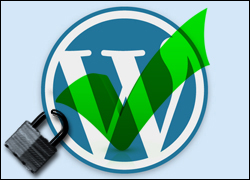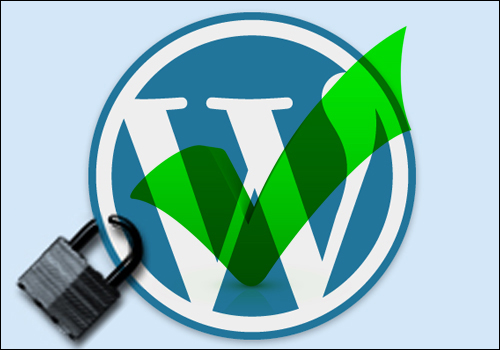 This tutorial is part of our tutorial series on WordPress Security. In this tutorial, we provide a WordPress Security Checklist that will help ensure your WordPress site is protected and secure.
This tutorial is part of our tutorial series on WordPress Security. In this tutorial, we provide a WordPress Security Checklist that will help ensure your WordPress site is protected and secure.
***
WordPress Security Checklist
![]()
*** Important – Read Me ***
Many of the tasks listed in the checklist below can be completed by non-technical users simply by following the tutorials in our WordPress Security training module.
Some tasks, however, should only be carried out by more technically advanced users.
If you don’t understand what to do or don’t feel confident performing one or more tasks, please ask a professional and experienced WordPress service provider for assistance.
![]()
Always back up your WordPress site (database and files) before making changes to files. Even small mistakes can have disastrous consequences if you are not careful.
Please note that we have no control over the software and services mentioned in this checklist and that under no circumstances will we be held responsible for any losses or damages incurred either directly or indirectly as a result of following the recommendations below.
We also provide a printable version of this checklist at the end of this tutorial. We recommend printing out this checklist and using it as a reference to ensure the continued security of your WordPress site.
Basic Website Security Checklist
- Computer is fully protected and free of spyware, malware, and viruses (antivirus, malware scanner, and firewall installed and active), and the operating system is up to date.
- Password management system in place (e.g. Roboform)
- WordPress site is hosted with a trusted and reliable webhost
- Download files are protected.
WordPress Security Setup Checklist
- Protect your site against spam (Install an antispam plugin, e.g. Akismet or Bad Behavior)
- Perform a full security scan of your WordPress files (Install a security scan plugin, e.g. Defender).
- Secure your WP database (change database table prefix).
- Option 1: Install a brute-force attack prevention plugin (e.g. Login Lockdown, Limit Login Attempts), or
- Option 2: Install a comprehensive security plugin (e.g.
- Defender)
- Secure your wp-admin folder.
- Secure your uploads folder.
- Secure your wp-config.php file.
- Delete redundant WordPress core files (e.g. readme.html, install.php, etc.)
- Set secure permissions for files and folders.
- Protect server directories (e.g. add empty index.php files to directories)
- Add a secure admin user.
- Set correct permissions for users (User Roles and Capabilities)
- Remove user registration capabilities (if not required)
- Set up an Intrusion Detection System (Install a file monitoring plugin, e.g. File Monitor Plus)
- Add Antivirus protection (Install an antivirus plugin, e.g. Antivirus for WordPress)
- Add Firewall protection (Install a firewall plugin like WordPress Firewall 2, Block Bad Queries, etc …)
- Enable data logging and archiving.
- Secure PHP.
- Set up hosting monitoring (e.g. Uptime, Sucuri)
WordPress Security Maintenance Checklist
Schedule the tasks below to be performed on a regular basis:
- Learn how to perform a complete WordPress maintenance routine.
- Backup your site manually using cPanel once, and then every so often.
- Install an automatic data backup system (e.g. Snapshot)
- Schedule automated WordPress backups (e.g. weekly, monthly).
- Perform a complete security scan.
- Check site files, logs, and security plugin reports.
- Change passwords every so often
- Perform regular WordPress updates
- Keep WordPress software up to date
- Keep WordPress plugins up to date
- Keep WordPress themes up to date
- Delete unused files (see How To Clean Up WordPress)
- Delete inactive users (see WordPress User Management)
- Delete inactive plugins (see How To Clean Up WordPress)
- Delete inactive themes (see WordPress Theme Management)
- Subscribe to WordPress security information updates
Critical Website Information Checklist
Have this information handy and keep it in a safe place!
- WordPress Service Provider Contact / Support Details
- WordPress Logins
- Domain Registrar Login
- Hosting Company Login
- Email Logins & Settings
- FTP Login Information
- FTP Account Data
- Amazon S3 Account Logins
- Google Account Logins
- Social Media Account Logins
- API Keys & Permission Codes
- Activation Keys (e.g. Premium WordPress plugins and themes)
- Browser Add-Ons Data
Download a printable copy of this free WordPress Security checklist below.
Hopefully, you have gone through the above checklist and implemented measures that will help ensure your WordPress site is protected and secure.

***
"Learning WordPress has been a huge stumbling block for me. I've been looking for something that covers absolutely everything but doesn't cost an arm and a leg. Thank you so much ... you have just provided me with what I have been looking for! Truly appreciated!" - Tanya
***

